FIG. 48.11 Some common land biomes

Tundra
Tundra is the coldest biome, and short days in winter limit the growing season. Tundra occurs close to the North Pole, above 65° N. The South Pole is largely surrounded by the ice and seas of Antarctica, and so there is very little area with plants. Precipitation is low, but because rates of evaporation are also low and because drainage is commonly poor, the ground is usually waterlogged and permanent ice occurs below a few centimeters of soil. Primary producers are mostly mosses, lichens, herbs, and low shrubs. Grasses and sedges occur in drier places, as do other flowering plants. Plant diversity is low, and most plants are small. Caribou are conspicuous grazers, but other primary consumers, including rabbits, birds, and insects, occur as well. Wolves and foxes are key predators. Fungi and bacteria decompose organic detritus, but low temperatures and water-
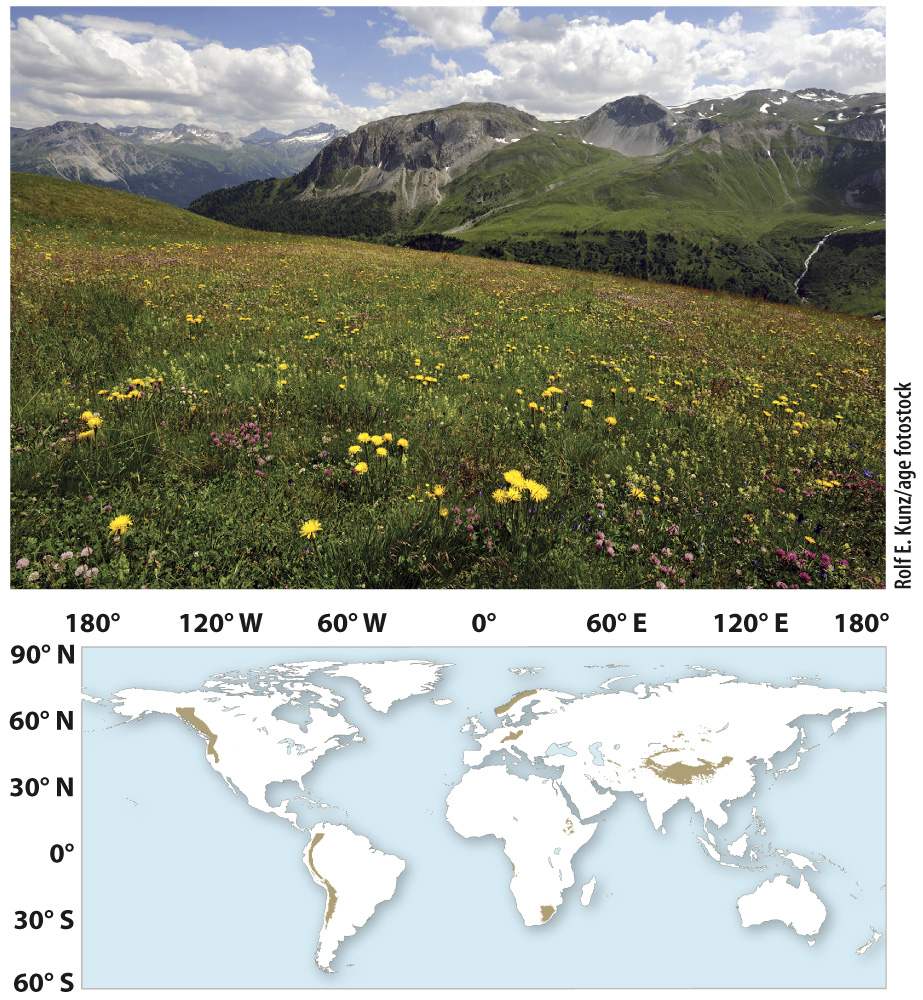
Alpine
The Alpine biome is similar to tundra but lacks permanent ice below the soil, and the temperatures vary more widely. Alpine areas occur throughout the world, often at about 10,000 feet (3000 m) at lower latitudes, but always just below the snow line. Because of their altitude, these are windy, cold places. The thin atmosphere provides only limited protection from UV radiation. Many alpine plants are therefore low and slow growing. Grasses are abundant, as are herbs that can provide spectacular wildflower displays during the short growing season. Alpine grazers include mountain goats, llamas, yaks, and marmots, as well as seasonally active insects. Predators include wolves and cats such as the Himalayan snow leopard.
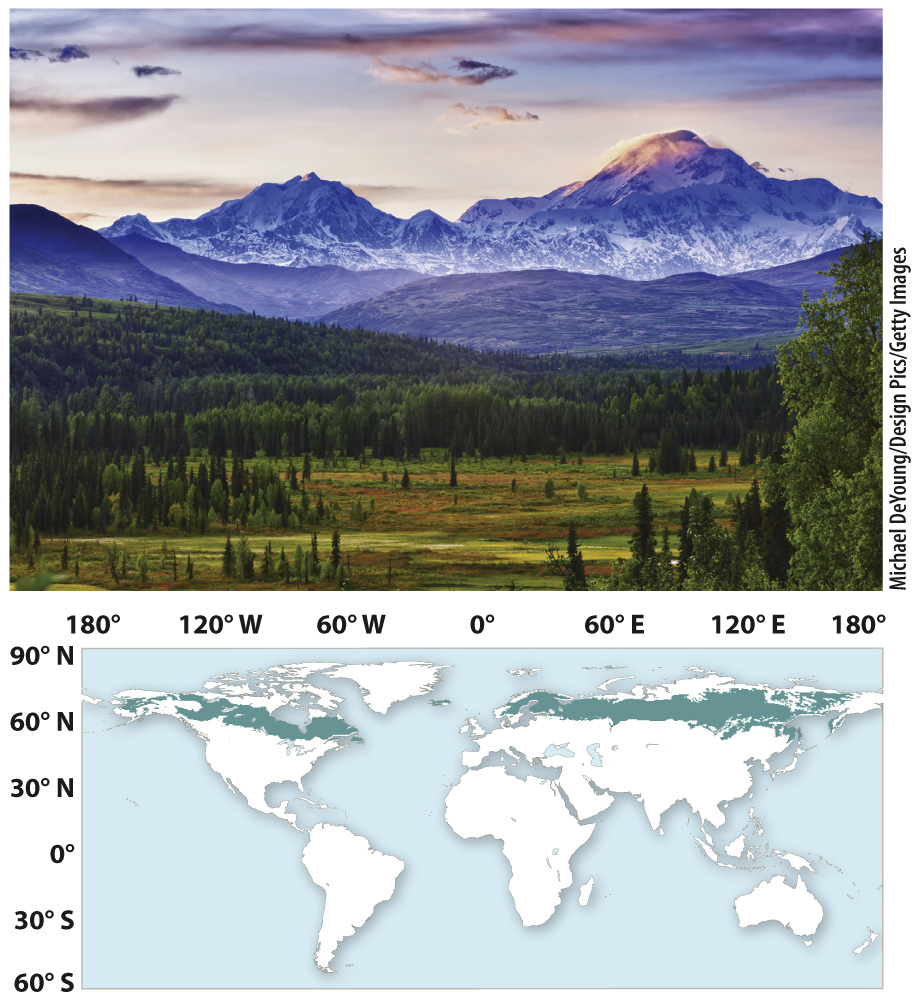
Taiga
These cool, moist forests occur from 50° N to 65° N. The short summer brings rain, and most of the plants are low-

Temperate coniferous forest
Two broad areas of temperate coniferous forest occur below 50° N in North America, northern Japan, and parts of Europe and continental Asia. Along the Pacific coast of North America, warm summers and mild winters, along with abundant precipitation, permit growth of enormous conifers such as Douglas Fir, Red Cedar, Sitka Spruce, and redwoods. Much of the undergrowth consists of grasses, ferns, and members of the blueberry family. Understory shrubs are uncommon. In the interior of North America, much less precipitation and colder winter temperatures support drought-
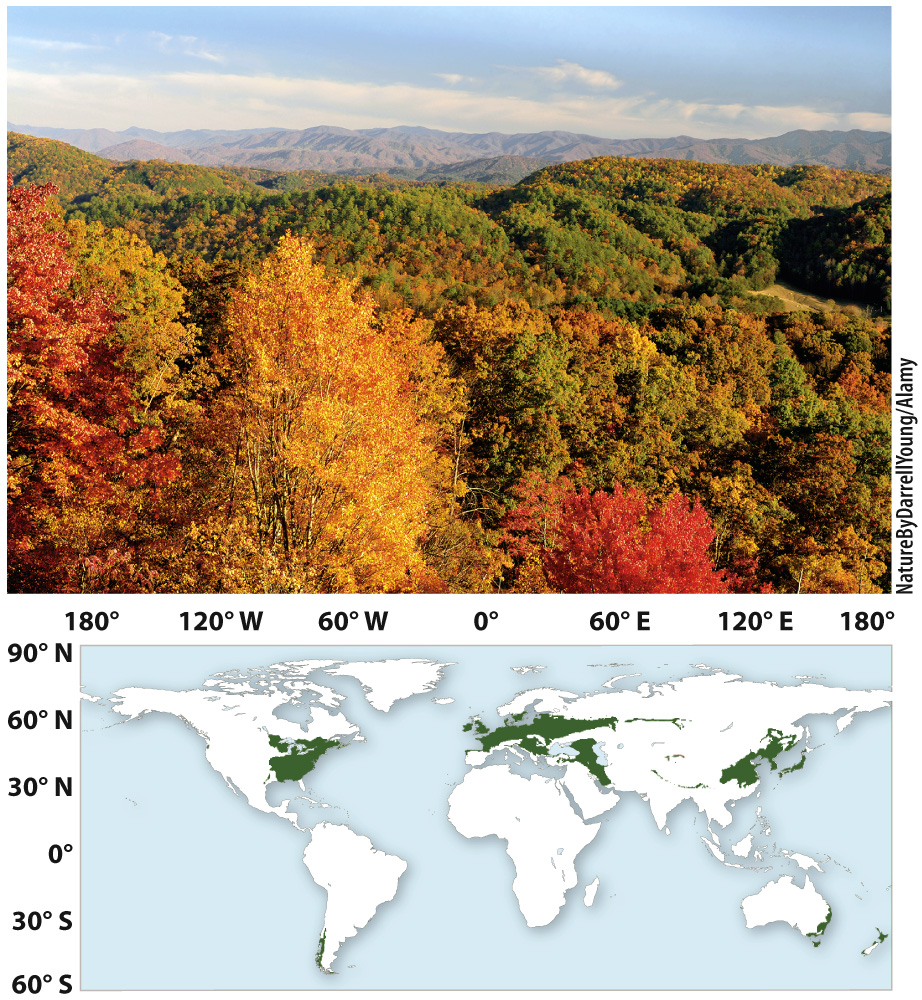
Deciduous forest
A moderate climate and dominance of hardwood deciduous trees occur across much of eastern North America, Europe, and Asia. Much of this biome has been subjected to human disturbance for agriculture and urban development. There are usually 15 to 25 tree species, including maples, oaks, poplars, and birches. Springtime sun passes through seasonally leafless trees to reach a diverse understory flora. Soils are rich in nutrients from annual leaf fall, and the moderate temperatures and precipitation promote decomposition, while the cool winters promote accumulation of organic materials. Soils contain a diversity of microbes and fungi, along with the protists and invertebrate animals that feed on them. Insects, birds, and mammals are relatively diverse, joined by snakes, lizards, and amphibians.
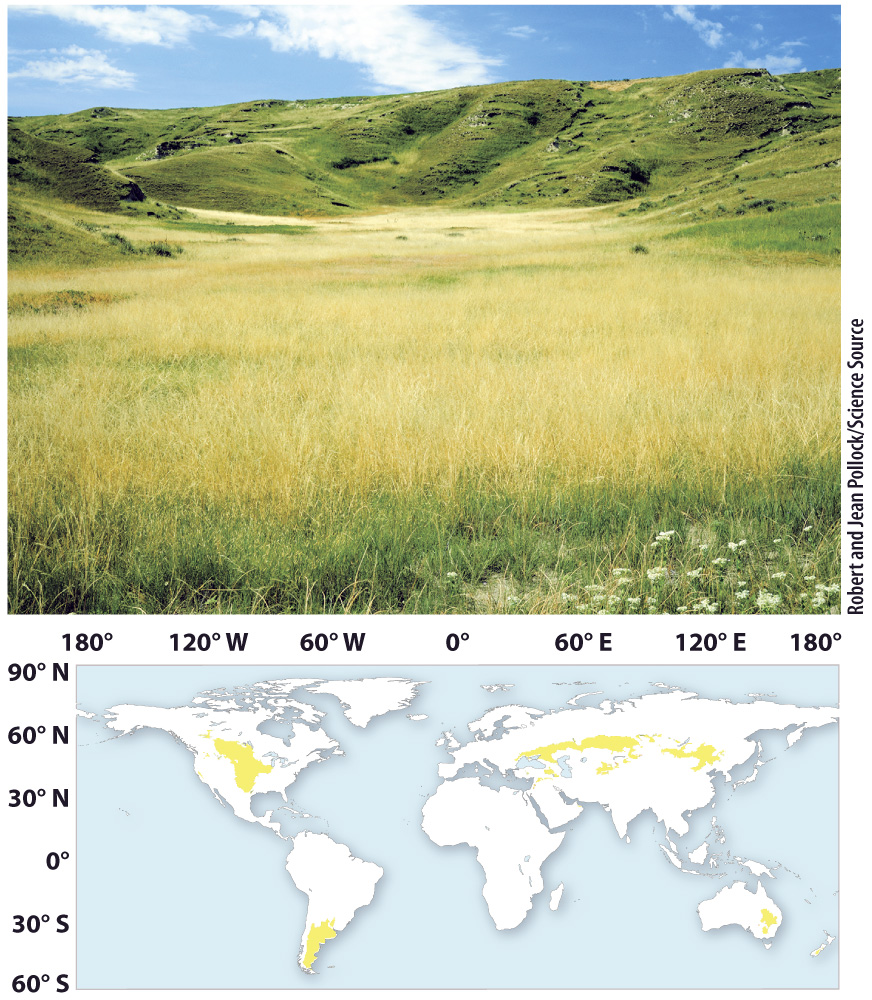
Temperate grassland
Before human settlement, this biome occupied most of the midwestern United States and south central Canada, dominated by blue-
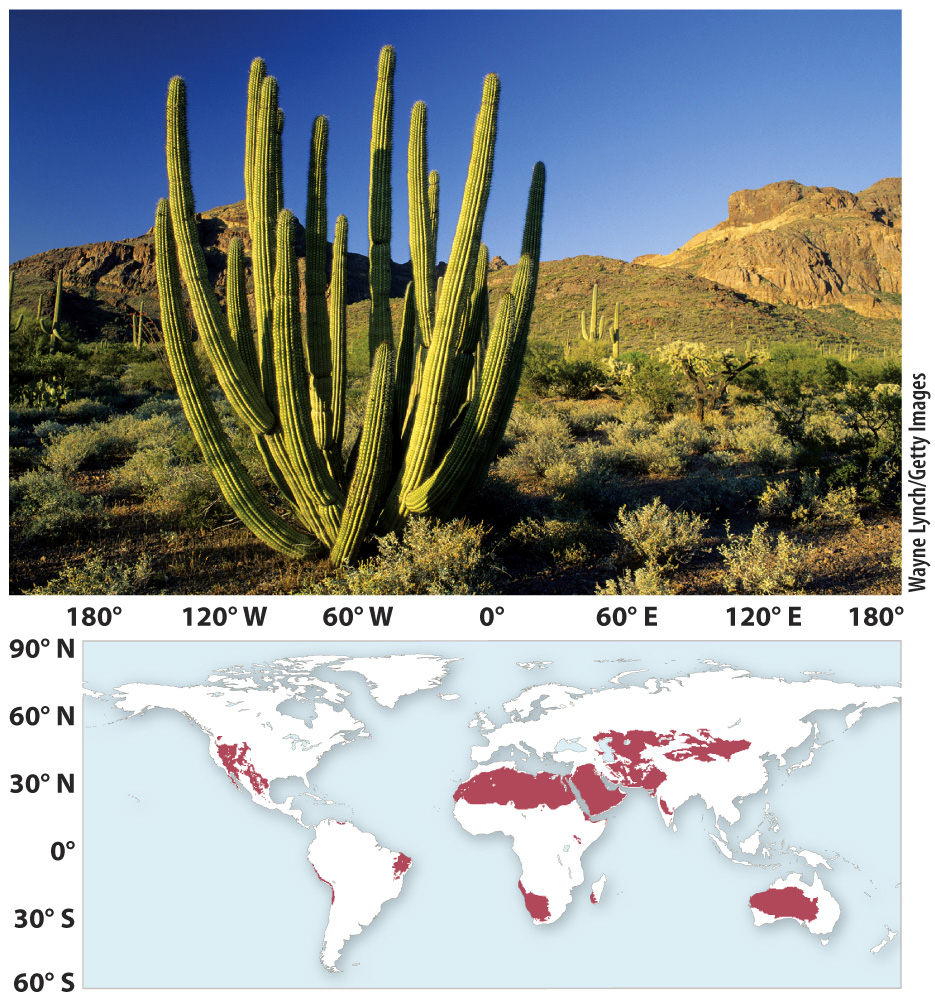
Desert
Desert occurs in continental interiors around the world north and south of the equator from 15° to 35° latitude. Wind patterns prevent this biome from receiving more than a few centimeters of precipitation annually. Deep-

Chaparral
Like that of deserts, the distribution of chaparral reflects a narrow range of climate conditions and occurs on the western edge of continents from 32° to 40° latitude north and south of the equator. Precipitation ranges from 30 to 75 cm per year, usually falling in a period of 2 to 4 months. Typical plants are herbs that die and reseed themselves every year, evergreen shrubs, and small trees. Olives, eucalyptus, acacia, and oaks are typical woody species, always drought resistant and often adapted to withstand fire. Limited precipitation means soils are not rich in organic materials.
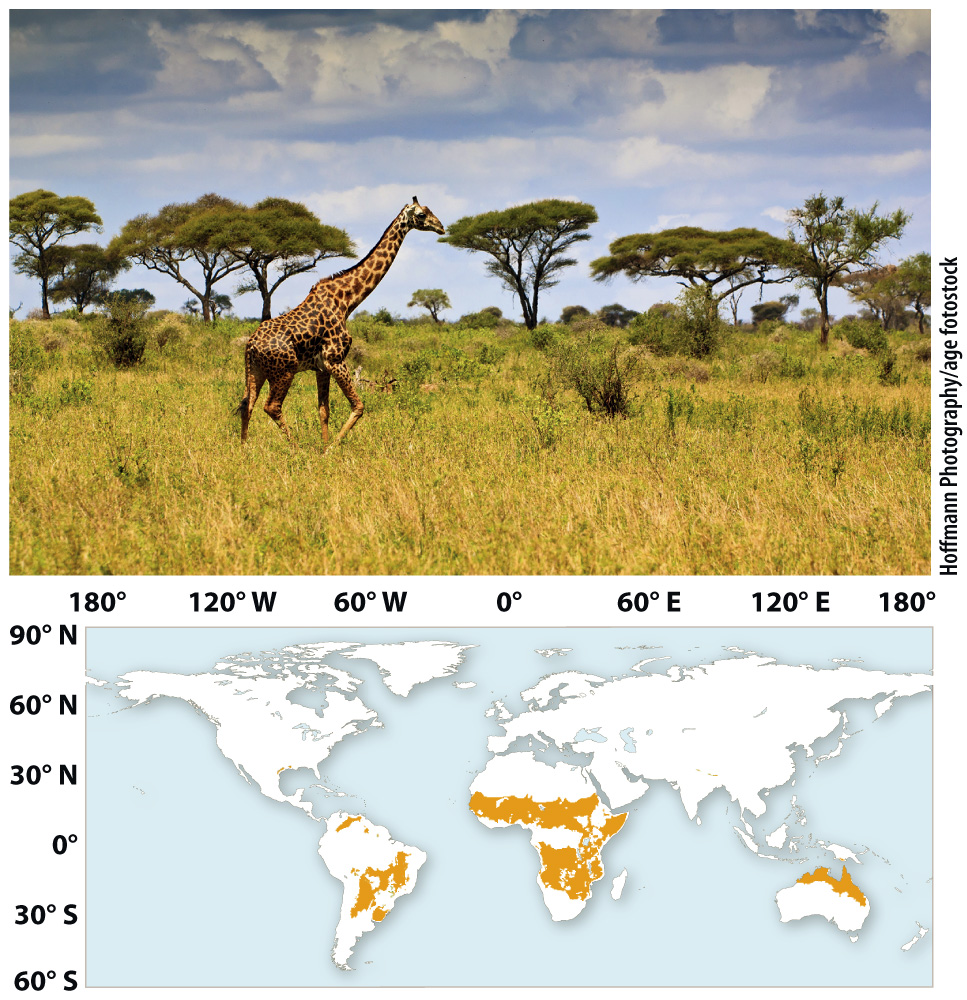
Savanna
Tall, perennial grasses dominate this biome, which occurs in warm, relatively dry regions of eastern Africa, South America, and Australia. Rain is seasonal and ranges from 75 to 150 cm per year. Scattered trees and shrubs usually drop their leaves in the dry season to conserve moisture. As in temperate grasslands, fire plays a key role in maintaining this biome. Large mammalian grazers are abundant and diverse; these include the migrating antelopes, zebras, and giraffes well known from Africa, but also kangaroos and other marsupials in Australia and large rodents in South America. Predator diversity can also be high, as exemplified by lions and other cat species, hyenas, and wild dogs. Dingos are important predators in Australian savannas, but were introduced only a few thousand years ago from southeastern Asia. Before that, the top carnivores included large, now-

Tropical rain forest
The most diverse of all terrestrial biomes, tropical rain forests extend north and south of the equator from 10° N to 10° S. Annual precipitation is commonly more than 250 cm, and tree diversity alone often exceeds 300 species per hectare. Trees grow tall, and many have buttressed roots for support. Lianas and other epiphytic plants are common. Most leaves are evergreen and leathery and many have long pointed tips that facilitate drainage of excess moisture. Because of the high temperatures and heavy rains, decomposition by fungi and bacteria is rapid, preventing the accumulation of organic materials in clay-